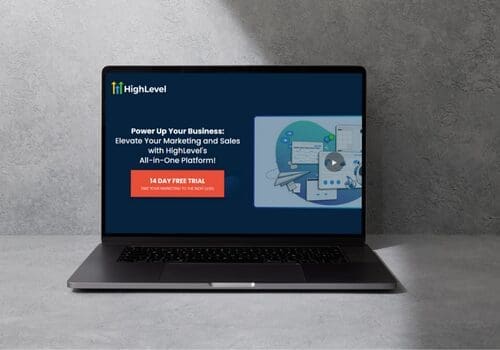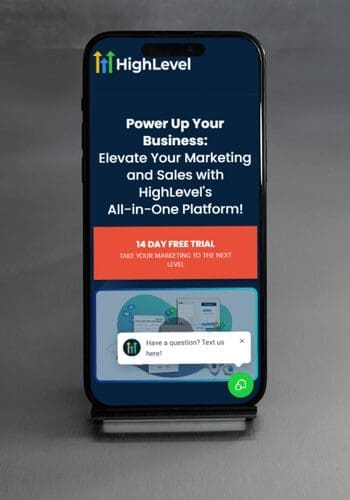- Streamline snapshots with clutter-free templates and auto email.
- Quick Summary – Snapshot Workflow Automation
- What’s New in Template and Workflow Visibility
- How Background Email Action Handling Works
- Why This Change Matters for Agencies and Teams
- How to Use the Snapshot Workflow Automation Process
- Quick Tips for Smoother Syncing and Fewer Errors
- Known Limitations and How to Work Around Them
- FAQs About Snapshot Workflow Automation
- Final Thoughts on Optimizing Snapshot Workflow Automation
Streamline snapshots with clutter-free templates and auto email.
If you’ve ever opened a GHL snapshot in a target location and been hit with a wall of extra email templates, you know how messy things can get. That clutter’s gone. The new snapshot workflow automation update makes managing your snapshots cleaner, smarter, and faster.
Here’s what’s changed: now, only your original templates and snapshot workflow automation appear in the target location. The email action templates still come over, but they stay out of sight—quietly imported and mapped in the background. The result? You see only what matters, while GHL does the heavy lifting.
This isn’t just a cosmetic update. It’s about efficiency. No more digging through dozens of auto-generated templates to find the one you actually use. No more wondering if an email action synced correctly. The update streamlines your workflow process from snapshot workflow automation creation to deployment, giving agencies more time to focus on clients instead of admin tasks.

Whether you’re onboarding new clients or pushing workflow updates, snapshot workflow automation now keeps your dashboard cleaner and your processes tighter. Let’s break down what’s new, how it works, and how you can use it to speed up your day-to-day operations.
Quick Summary – Snapshot Workflow Automation
Purpose: To streamline template and workflow management in GHL by reducing clutter and automating email action handling.
Why It Matters: Keeps your template list clean, improving navigation and reducing mistakes.
What You Get: Automatic background mapping of email action templates without manual linking.
Time to Complete: Just a few minutes once you know the correct push order.
Difficulty Level: Low for anyone familiar with snapshots.
Key Outcome: Faster setup, fewer errors, and a scalable automation process.
Extra Benefit: Less training time for new team members because only essential templates are visible.
What’s New in Template and Workflow Visibility
One of the biggest frustrations with snapshot workflow automation has always been the clutter. Every time you imported a workflow with email actions, GHL would also pull in the related email templates—and display them right alongside your original ones. Over time, this created a confusing list where duplicates and system-generated templates sat next to your actual, usable content.
With the new update, that problem disappears. In the target location, you’ll now see only the original templates and workflows you pushed from your source location. The extra email action templates? They’re still there, but now they’re tucked neatly out of view. GHL imports and maps them automatically behind the scenes, so they’re ready when your workflows need them—without clogging up your template list.
Automate marketing, manage leads, and grow faster with GoHighLevel.

This streamlined approach makes your workspace easier to navigate and manage. You no longer have to waste time guessing which version of an email template is safe to edit, or risk accidentally changing a system-linked one. Instead, you can focus on the assets you actually work with every day.
For agencies managing multiple clients, this is a huge win. It keeps the template area clean, reduces the risk of errors, and makes onboarding new accounts a much smoother experience.
How Background Email Action Handling Works
Before this update, importing a snapshot workflow automation that included email actions could be a bit of a juggling act. If the email templates didn’t import correctly—or if they appeared as duplicates—you had to manually link them back to the workflows. It was tedious, error-prone, and frustrating for agencies trying to scale fast.
Now, the process is hands-off. When you push a snapshot from a source location to a target location, GHL automatically imports the related email action templates in the background. These hidden templates are still fully functional—they’re just no longer visible in your template list. The system maps them to the correct workflows instantly, ensuring they fire off as expected without you lifting a finger.
This behind-the-scenes automation also reduces the risk of broken snapshot workflow automation. Even if you’re pushing multiple workflows and templates at once, the system keeps track of which email actions belong to which workflow. As long as you push the workflow and its linked template together (or the template first), everything syncs up perfectly.
The result? Less manual setup, fewer mapping mistakes, and a smoother deployment process. You get the benefits of complete automation without the visual clutter that used to slow you down.
Why This Change Matters for Agencies and Teams
For agencies running multiple client accounts, efficiency isn’t optional—it’s survival. Every extra click, every unnecessary scroll through cluttered lists, adds up over time. The new snapshot workflow automation update directly tackles one of those hidden time drains: template overload.
By showing only original templates and workflows in the target location, your team can immediately find the assets they need without second-guessing. That means faster onboarding, quicker workflow edits, and less risk of accidentally breaking an automation by editing the wrong template.
The background email action handling is just as impactful. Agencies no longer have to manually import or link those templates, which used to be a common point of failure when pushing snapshot workflow automation. Instead, the system guarantees they’re mapped correctly, reducing the chance of missed communications or broken sequences.
For teams, this change also improves training and standard operating procedures. New staff won’t have to learn “which templates not to touch” because they won’t see those system-generated ones at all. The workspace stays clean, the process stays consistent, and everyone works faster.
Ultimately, this isn’t just a quality-of-life update—it’s a scaling tool. Less clutter and more snapshot workflow automation mean your agency can handle more accounts with the same resources, boosting both efficiency and profitability.
How to Use the Snapshot Workflow Automation Process
If you want the new snapshot workflow automation to work flawlessly, the order you push and map your assets matters. Follow this process, and you’ll avoid sync failures, broken email actions, and hours of rework. Skip steps or push them out of order, and you might be back in cleanup mode. Let’s keep it clean, fast, and bulletproof.
Step 01 – Create a Snapshot in Your Source Location
To start, log into the source account where your original workflows and templates live.
1.1 Navigate to the Snapshots area in your agency dashboard.

1.2 Click + Create New Snapshot.
1.3 Select the location containing the workflows and templates you want to export.

Step 02 – Select What to Include
Choose the workflows and templates you want to push to your target location.
2.1 Check the box for each original workflow you want to include.
2.2 Check the box for each original template linked to those workflows.
2.3 Skip email action templates—GHL will handle them in the background.

Step 03 – Push the Snapshot to the Target Location
Once you’ve built your snapshot, send it to your target sub-account.
3.1 Click Push to Location.
3.2 Select your target account from the list.
3.3 Confirm and send the snapshot.

Step 04 – Review the Template List in the Target Location
After the snapshot import is complete, check the template section.
4.1 Go to Marketing → Emails → Templates.
4.2 You’ll only see your original templates—no clutter from email action templates.

Step 05 – Let the System Map Email Actions Automatically
This happens behind the scenes, but you can verify it’s working.
5.1 GHL will automatically import and map hidden email action templates to the correct workflows.
5.2 No manual linking is needed.

Step 06 – Test Your Workflows
Run a quick test to ensure everything is firing correctly.
6.1 Trigger a workflow with an email action.
6.2 Verify that the email sends without errors.
6.3 If everything works, you’re ready to deploy live.

Quick Tips for Smoother Syncing and Fewer Errors
Even with the new snapshot workflow automation doing most of the heavy lifting, there are still a few best practices that can save you from future headaches. These tips will keep your workflows running clean and your templates syncing without drama.
First, always push the template before (or at the same time as) the workflow it’s linked to. The automation can’t map an email action if the template isn’t there yet. This simple step alone prevents the majority of mapping failures.
Second, when refreshing or updating a workflow in a client account, delete the old workflow and its associated email actions before pushing the updated snapshot. This ensures you’re not stacking duplicate or outdated templates in the background.
Third, stick to consistent naming conventions for your workflows and templates. This makes it easier to identify what’s been pushed and what still needs to be updated, especially if you manage multiple client accounts.
Finally, always run a test workflow after pushing a snapshot. Trigger an email action, confirm the right template fires, and check the content. A two-minute test now can save hours of troubleshooting later.
Following these simple habits will keep your syncing process smooth, your accounts clean, and your client communications running without a hitch.
Known Limitations and How to Work Around Them
While the snapshot workflow automation update is a huge improvement, it’s not without its quirks. Knowing these limitations—and how to work around them—will save you from frustration later.
The first big limitation: if you push a workflow without its linked template, the email action won’t map. The automation can’t guess which template belongs where, so the workflow will fail to send the intended email. The fix is simple—always push the template before or alongside the workflow.
Second, if you push the template after the snapshot workflow automation, mapping still fails. This is a known limitation from the snapshot system itself, so the order of operations is critical. If you get this wrong, you’ll need to delete both the workflow and the email actions, then re-push them together.
Third, bulk deletion of email actions isn’t supported in the GHL interface. If you’ve got dozens to clear out, you’ll need developer assistance or API calls to handle it efficiently.
These aren’t dealbreakers—they’re just points to remember when planning your pushes. By sticking to a proper push order and cleaning up outdated assets before importing new ones, you’ll avoid most of these pitfalls entirely. Think of it as keeping your workspace in fighting shape—clean, organized, and ready to perform.
FAQs About Snapshot Workflow Automation
By keeping these answers in mind, you’ll be able to troubleshoot quickly and keep your automation running without hiccups.
Final Thoughts on Optimizing Snapshot Workflow Automation
The new snapshot workflow automation update is more than just a cleaner interface—it’s a smarter, faster way to manage your client deployments. By hiding email action templates from the target location’s template list, GHL has eliminated one of the biggest sources of clutter and confusion for agencies. At the same time, the automatic background mapping ensures that workflows stay fully functional without the need for tedious manual linking.
For busy teams juggling multiple accounts, this means less time spent digging for the right assets and more time focused on client strategy and results. The combination of visual simplicity and behind-the-scenes reliability makes snapshots easier to work with, even for newer team members.
Of course, the benefits really shine when you follow best practices: push templates before workflows, delete outdated assets before refreshing, and test every import. Paired with a solid naming system, these habits keep your accounts organized and your automations firing on all cylinders.
In short, this update gives agencies a cleaner workspace, a faster setup process, and fewer snapshot workflow automation headaches. If scaling your client base without scaling your workload is the goal, this change is a step in the right direction.
Scale Your Business Today.
Streamline your workflow with GoHighLevel’s powerful tools.



